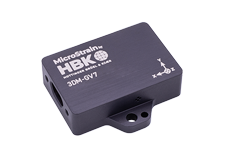In 2011 the market for energy harvesters reached US$700 million, with the majority of the value going into consumer electronic applications, where energy harvesters have been used for some time. Approximately 1.6 million energy harvesters were used in wireless sensors, resulting in $13.75 million being spent on this market segment. The next few years will see a growth in the adoption of energy harvesting for wireless sensors with the market for industrial applications reaching US$140 million by 2017. Wireless sensor networks will be as big as US$200 million with bespoke military/aerospace applications reaching US$210 million (Market data taken from the IDTechEx report "Energy Harvesting and Storage for Electronic Devices 2011-2021", www.IDTechEx.com/energy).
The volume of harvesters (in units) sold into each of the market segments will vary significantly, mainly because of the different size/power output/specifications for each harvester in each market segment. For example, military and aerospace applications will account for approximately 70,000 units of high value harvesters in 2017, whereas industrial applications will reach over 40 million units.
Market drivers for growth
In the next few years we will be witnessing the emergence and growth of new markets which will drive further adoption and demand for energy harvesting solutions. Wireless sensor networks will lead to the realisation of implementation made possible through energy harvesting, with this being especially true in environments where either batteries are not allowed or their replacement is not possible. IDTechEx has identified the vivid interest in the sector and incorporates sessions on wireless sensor network technologies into its events on energy harvesting and storage technologies. The next event takes place in Berlin, Germany on the 15-16 of May 2012 (
www.IDTechEx.com/EH).
The conference will also be focusing on another newly emerging technology, the use of thermoelectric generators in the automotive industry. This is a market segment that has attracted attention from many automotive manufacturers, who promise a range of vehicles will be available with waste heat recovery systems integrated in them in the next few years.
Other than the emergence of truly new applications, the integration of harvesters in complete devices further spurs the commercialisation of the technologies. Adopters now have a complete solution available rather than discrete components, making potential benefits easily identifiable with minimal difficulties or intricate device design required. Vermont-based sensor company
MicroStrain, have technology that is an interesting example in monitoring vibrations, satisifying the needs of niche applications with completely bespoke solutions and vibration harvesters that are fully integrated.










